- Home
- Tom Clancy
Tom Clancy's Jack Ryan Books 1-6 Page 7
Tom Clancy's Jack Ryan Books 1-6 Read online
Page 7
“Torpedo tubes? No—four of them are inboard.” Greer reached into his drawer and came out with a magnifying glass. In an age of computer-enhanced imagery it struck Ryan as charmingly anachronistic.
“You’re the sub driver, James,” Davenport observed.
“Twenty years ago, Charlie.” He’d made the switch from line officer to professional spook in the early sixties. Captain Casimir, Ryan noted, wore the wings of a naval aviator and had the good sense to remain quiet. He wasn’t a “nuc.”
“Well, they can’t be torpedo tubes. They have the normal four of them at the bow, inboard of these openings…must be six or seven feet across. How about launch tubes for the new cruise missile they’re developing?”
“That’s what the Royal Navy thinks. I had a chance to talk it over with their intelligence chaps. But I don’t buy it. Why put an anti-surface-ship weapon on a strategic platform? We don’t, and we deploy our boomers a lot further forward than they do. The doors are symmetrical through the boat’s axis. You can’t launch a missile out of the stern, sir. The openings barely clear the screws.”
“Toward sonar array,” Davenport said.
“Granted they could do that, if they trail one screw. But why two of them?” Ryan asked.
Davenport gave him a nasty look. “They love redundancies.”
“Two doors forward, two aft, I can buy cruise missile tubes. I can buy a towed array. But both sets of doors exactly the same size?” Ryan shook his head. “Too much of a coincidence. I think it’s something new. That’s what interrupted her construction for so long. They figured something new for her and spent the last two years rebuilding the Typhoon configuration to accommodate it. Note also that they added six more missiles for good measure.”
“Opinion,” Davenport observed.
“That’s what I’m paid for.”
“Okay, Jack, what do you think it is?” Greer asked.
“Beats me, sir. I’m no engineer.”
Admiral Greer looked his guests over for a few seconds. He smiled and leaned back in his chair. “Gentlemen, we have what? Ninety years of naval experience in this room, plus this young amateur.” He gestured at Ryan. “Okay, Jack, you’ve set us up for something. Why did you bring this over personally?”
“I want to show these to somebody.”
“Who?” Greer’s head cocked suspiciously to one side.
“Skip Tyler. Any of you fellows know him?”
“I do,” Casimir nodded. “He was a year behind me at Annapolis. Didn’t he get hurt or something?”
“Yeah,” Ryan said. “Lost his leg in an auto accident four years ago. He was up for command of the Los Angeles and a drunk driver clipped him. Now he teaches engineering at the Academy and does a lot of consulting work with Sea Systems Command—technical analysis, looking at their ship designs. He has a doctorate in engineering from MIT, and he knows how to think unconventionally.”
“How about his security clearance?” Greer asked.
“Top secret or better, sir, because of his Crystal City work.”
“Objections, Charlie?”
Davenport frowned. Tyler was not part of the intelligence community. “Is this the guy who did the evaluation of the new Kirov?”
Yes, sir, now that I think about it,” Casimir said. “Him and Saunders over at Sea Systems.”
“That was a nice piece of work. It’s okay with me.”
“When do you want to see him?” Greer asked Ryan.
“Today, if it’s all right with you, sir. I have to run over to Annapolis anyway, to get something from the house, and—well, do some quick Christmas shopping.”
“Oh? A few dolls?” Davenport asked.
Ryan turned to look the admiral in the eye. “Yes, sir, as a matter of fact. My little girl wants a Skiing Barbie doll and some Jordache doll outfits. Didn’t you ever play Santa, Admiral?”
Davenport saw that Ryan wasn’t going to back off anymore. He wasn’t a subordinate to be browbeaten. Ryan could always walk away. He tried a new tack. “Did they tell you over there that October sailed last Friday?”
“Oh?” They hadn’t. Ryan was caught off guard. “I thought she wasn’t scheduled to sail until this Friday.”
“So did we. Her skipper is Marko Ramius. You heard about him?”
“Only secondhand stuff. The Brits say he’s pretty good.”
“Better than that,” Greer noted. “He’s about the best sub driver they have, a real charger. We had a considerable file on him when I was at DIA. Who’s bird-doggin’ him for you, Charlie?”
“Bremerton was assigned to it. She was out of position doing some ELINT work when Ramius sailed, but she was ordered over. Her skipper’s Bud Wilson. Remember his dad?”
Greer laughed out loud. “Red Wilson? Now there was one spirited submarine driver! His boy any good?”
“So they say. Ramius is about the best the Soviets have, but Wilson’s got a 688 boat. By the end of the week, we’ll be able to start a new book on Red October.” Davenport stood. “We gotta head back, James.” Casimir hurried to get the coats. “I can keep these?”
“I suppose, Charlie. Just don’t go hanging them on the wall, even to throw darts at. And I guess you want to get moving, too, Jack?”
“Yes, sir.”
Greer lifted his phone. “Nancy, Dr. Ryan will need a car and a driver in fifteen minutes. Right.” He set the receiver down and waited for Davenport to leave. “No sense getting you killed out there in the snow. Besides, you’d probably drive on the wrong side of the road after a year in England. Skiing Barbie, Jack?”
“You had all boys, didn’t you, sir? Girls are different.” Ryan grinned. “You’ve never met my little Sally.”
“Daddy’s girl?”
“Yep. God help whoever marries her. Can I leave these photographs with Tyler?”
“I hope you’re right about him, son. Yes, he can hold onto them—if and only if he has a good place to keep them.”
“Understood, sir.”
“When you get back—probably be late, the way the roads are. You’re staying at the Marriott?”
“Yes, sir.”
Greer thought that over. “I’ll probably be working late. Stop by here before you bed down. I may want to go over a few things with you.”
“Will do, sir. Thanks for the car.” Ryan stood.
“Go buy your dolls, son.”
Greer watched him leave. He liked Ryan. The boy was not afraid to speak his mind. Part of that came from having money and being married to more money. It was a sort of independence that had advantages. Ryan could not be bought, bribed, or bullied. He could always go back to writing history books full time. Ryan had made money on his own in four years as a stockbroker, betting his own money on high-risk issues and scoring big before leaving it all behind—because, he said, he hadn’t wanted to press his luck. Greer didn’t believe that. He thought Jack had been bored—bored with making money. He shook his head. The talent that had enabled him to pick winning stocks Ryan now applied to the CIA. He was rapidly becoming one of Greer’s star analysts, and his British connections made him doubly valuable. Ryan had the ability to sort through a pile of data and come out with the three or four facts that meant something. This was too rare a thing at the CIA. The agency still spent too much of its money collecting data, Greer thought, and not enough collating it. Analysts had none of the supposed glamour—a Hollywood-generated illusion—of a secret agent in a foreign land. But Jack knew how to analyze reports from such men and data from technical sources. He knew how to make a decision and was not afraid to say what he thought, whether his bosses liked it or not. This sometimes grated the old admiral, but on the whole he liked having subordinates whom he could respect. The CIA had too many people whose only skill was kissing ass.
The U.S. Naval Academy
The loss of his left leg above the knee had not taken away Oliver Wendell Tyler’s roguish good looks or his zest for life. His wife could testify to this. Since leaving the active service
four years before, they had added three children to the two they already had and were working on a sixth. Ryan found him sitting at a desk in an empty classroom in Rickover Hall, the U.S. Naval Academy’s science and engineering building. He was grading papers.
“How’s it goin’, Skip?” Ryan leaned against the door frame. His CIA driver was in the hall.
“Hey, Jack! I thought you were in England.” Tyler jumped to his foot—his own phrase—and hobbled over to grab Ryan’s hand. His prosthetic leg ended in a square, rubber-coated band instead of a pseudo-foot. It flexed at the knee, but not by much. Tyler had been a second-squad All American offensive tackle sixteen years before, and the rest of his body was as hard as the aluminum and fiberglass in his left leg. His handshake could make a gorilla wince. “So, what are you doing here?”
“I had to fly over to get some work done and do a little shopping. How’s Jean and your…five?”
“Five and two-thirds.”
“Again? Jean ought to have you fixed.”
“That’s what she said, but I’ve had enough things disconnected.” Tyler laughed. “I guess I’m making up for all those monastic years as a nuc. Come on over and grab a chair.”
Ryan sat on the corner of the desk and opened his briefcase. He handed Tyler a folder.
“Got some pictures I want you to look at.”
“Okay.” Tyler flipped it open. “Whose—a Russian! Big bastard. That’s the basic Typhoon configuration. Lots of modifications, though. Twenty-six missiles instead of twenty. Looks longer. Hull’s flattened out some, too. More beam?”
“Two or three meters’ worth.”
“I heard you were working with the CIA. Can’t talk about that, right?”
“Something like that. And you never saw these pictures, Skip. Understood?”
“Right.” Tyler’s eyes twinkled. “What do you want me not to look at them for?”
Ryan pulled the blowups from the back of the folder. “These doors, bow and stern.”
“Uh-huh.” Tyler set them down side by side. “Pretty big. They’re two meters or so, paired fore and aft. They look symmetrical through the long axis. Not cruise missile tubes, eh?”
“On a boomer? You put something like that on a strategic missile sub?”
“The Russkies are a funny bunch, Jack, and they design things their own way. This is the same bunch that built the Kirov class with a nuclear reactor and an oil-fired steam plant. Hmm…twin screws. The aft doors can’t be for a sonar array. They’d foul the screws.”
“How ’bout if they trail one screw?”
“They do that with surface ships to conserve fuel, and sometimes with their attack boats. Operating a twin-screw missile boat on one wheel would probably be tricky on this baby. The Typhoon’s supposed to have handling problems, and boats that handle funny tend to be sensitive to power settings. You end up jinking around so much that you have trouble holding course. You notice how the doors converge at the stern?”
“No, I didn’t.”
Tyler looked up. “Damn! I should have realized it right off the bat. It’s a propulsion system. You shouldn’t have caught me marking papers, Jack. It turns your brain to Jell-O.”
“Propulsion system?”
“We looked at this—oh, must have been twenty some years ago—when I was going to school here. We didn’t do anything with it, though. It’s too inefficient.”
“Okay, tell me about it.”
“They called it a tunnel drive. You know how out West they have lots of hydroelectric power plants? Mostly dams. The water spills onto wheels that turn generators. Now there’s a few new ones that kind of turn that around. They tap into underground rivers, and the water turns impellers, and they turn the generators instead of a modified mill wheel. An impeller is like a propeller, except the water drives it instead of the other way around. There’s some minor technical differences, too, but nothing major. Okay so far?
“With this design, you turn that around. You suck water in the bow and your impellers eject it out the stern, and that moves the ship.” Tyler paused, frowning. “As I recall you have to have more than one per tunnel. They looked at this back in the early sixties and got to the model stage before dropping it. One of the things they discovered is that one impeller doesn’t work as well as several. Some sort of back pressure thing. It was a new principle, something unexpected that cropped up. They ended up using four, I think, and it was supposed to look something like the compressor sets in a jet engine.”
“Why did we drop it?” Ryan was taking rapid notes.
“Mostly efficiency. You can only get so much water down the pipes no matter how powerful your motors are. And the drive system took up a lot of room. They partially beat that with a new kind of electric induction motor, I think, but even then you’d end up with a lot of extraneous machinery inside the hull. Subs don’t have that much room to spare, even this monster. The top speed limit was supposed to be about ten knots, and that just wasn’t good enough, even though it did virtually eliminate cavitation sounds.”
“Cavitation?”
“When you have a propeller turning in the water at high speed, you develop an area of low pressure behind the trailing edge of the blade. This can cause water to vaporize. That creates a bunch of little bubbles. They can’t last long under the water pressure, and when they collapse the water rushes forward to pound against the blades. That does three things. First, it makes noise, and us sub drivers hate noise. Second, it can cause vibration, something else we don’t like. The old passenger liners, for example, used to flutter several inches at the stern, all from cavitation and slippage. It takes a hell of a lot of force to vibrate a 50,000-ton ship; that kind of force breaks things. Third, it tears up the screws. The big wheels only used to last a few years. That’s why back in the old days the blades were bolted onto the hub instead of being cast in one piece. The vibration is mainly a surface ship problem, and the screw degradation was eventually conquered by improved metallurgical technology.
“Now, this tunnel drive system avoids the cavitation problem. You still have cavitation, but the noise from it is mainly lost in the tunnels. That makes good sense. The problem is that you can’t generate much speed without making the tunnels too wide to be practical. While one team was working on this, another was working on improved screw designs. Your typical sub screw today is pretty large, so it can turn more slowly for a given speed. The slower the turning speed, the less cavitation you get. The problem is also mitigated by depth. A few hundred feet down, the higher water pressure retards bubble formation.”
“Then why don’t the Soviets copy our screw designs?”
“Several reasons, probably. You design a screw for a specific hull and engine combination, so copying ours wouldn’t automatically work for them. A lot of this work is still empirical, too. There’s a lot of trial and error in this. It’s a lot harder, say, than designing an airfoil, because the blade cross-section changes radically from one point to another. I suppose another reason is that their metallurgical technology isn’t as good as ours—same reason that their jet and rocket engines are less efficient. These new designs place great value on high-strength alloys. It’s a narrow specialty, and I only know the generalities.”
“Okay, you say that this is a silent propulsion system, and it has a top speed limit of ten knots?” Ryan wanted to be clear on this.
“Ballpark figure. I’d have to do some computer modeling to tighten that up. We probably still have the data laying around at the Taylor Laboratory.” Tyler referred to the Sea Systems Command design facility on the north side of the Severn River. “Probably still classified, and I’d have to take it with a big grain of salt.”
“How come?”
“All this work was done twenty years ago. They only got up to fifteen-foot models—pretty small for this sort of thing. Remember that they had already stumbled across one new principle, that back-pressure thing. There might have been more out there. I expect they tried some computer models, but even i
f they did, mathematical modeling techniques back then were dirt-simple. To duplicate this today I’d have to have the old data and programs from Taylor, check it all over, then draft a new program based on this configuration.” He tapped the photographs. “Once that was done, I’d need access to a big league mainframe computer to run it.”
“But you could do it?”
“Sure. I’d need exact dimensions on this baby, but I’ve done this before for the bunch over at Crystal City. The hard part’s getting the computer time. I need a big machine.”
“I can probably arrange access to ours.”
Tyler laughed. “Probably not good enough, Jack. This is specialized stuff. I’m talking about a Cray-2, one of the biggies. To do this you have to mathematically simulate the behavior of millions of little parcels of water, the water flow over—and through, in this case—the whole hull. Same sort of thing NASA has to do with the Space Shuttle. The actual work is easy enough—it’s the scale that’s tough. They’re simple calculations, but you have to make millions of them per second. That means a big Cray, and there’s only a few of them around. NASA has one in Houston, I think. The navy has a few in Norfolk for ASW work—you can forget about those. The air force has one in the Pentagon, I think, and all the rest are in California.”
“But you could do it?”
“Sure.”
“Okay, get to work on it, Skip, and I’ll see if we can get you the computer time. How long?”
“Depending on how good the stuff at Taylor is, maybe a week. Maybe less.”
“How much do you want for it?”
“Aw, come on, Jack!” Tyler waved him off.
“Skip, it’s Monday. You get us this data by Friday and there’s twenty thousand dollars in it. You’re worth it, and we want this data. Agreed?”
“Sold.” They shook hands. “Can I keep the pictures?”
“I can leave them if you have a secure place to keep them. Nobody gets to see them, Skip. Nobody.”
“There’s a nice safe in the superintendent’s office.”
“Fine, but he doesn’t see them.” The superintendent was a former submariner.

 Changing of the Guard
Changing of the Guard Clear and Present Danger
Clear and Present Danger Hounds of Rome
Hounds of Rome Breaking Point
Breaking Point Tom Clancy's Jack Ryan Books 7-12
Tom Clancy's Jack Ryan Books 7-12 Full Force and Effect
Full Force and Effect The Archimedes Effect
The Archimedes Effect Combat Ops
Combat Ops Into the Storm: On the Ground in Iraq
Into the Storm: On the Ground in Iraq Under Fire
Under Fire Point of Impact
Point of Impact Red Rabbit
Red Rabbit Rainbow Six
Rainbow Six The Hunt for Red October
The Hunt for Red October The Teeth of the Tiger
The Teeth of the Tiger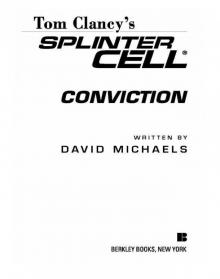 Conviction (2009)
Conviction (2009) Battle Ready
Battle Ready Patriot Games
Patriot Games The Sum of All Fears
The Sum of All Fears Fallout (2007)
Fallout (2007) Red Storm Rising
Red Storm Rising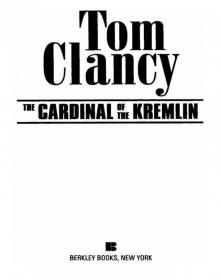 The Cardinal of the Kremlin
The Cardinal of the Kremlin Executive Orders
Executive Orders Lincoln, the unknown
Lincoln, the unknown Threat Vector
Threat Vector The Hunted
The Hunted Shadow Warriors: Inside the Special Forces
Shadow Warriors: Inside the Special Forces End Game
End Game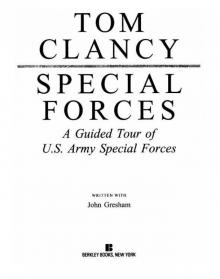 Special Forces: A Guided Tour of U.S. Army Special Forces
Special Forces: A Guided Tour of U.S. Army Special Forces Locked On
Locked On Line of Sight
Line of Sight Tom Clancy Enemy Contact - Mike Maden
Tom Clancy Enemy Contact - Mike Maden Fighter Wing: A Guided Tour of an Air Force Combat Wing
Fighter Wing: A Guided Tour of an Air Force Combat Wing Springboard
Springboard Line of Sight - Mike Maden
Line of Sight - Mike Maden EndWar
EndWar Dead or Alive
Dead or Alive Tom Clancy Support and Defend
Tom Clancy Support and Defend Checkmate
Checkmate Command Authority
Command Authority Carrier: A Guided Tour of an Aircraft Carrier
Carrier: A Guided Tour of an Aircraft Carrier Blacklist Aftermath
Blacklist Aftermath Marine: A Guided Tour of a Marine Expeditionary Unit
Marine: A Guided Tour of a Marine Expeditionary Unit Commander-In-Chief
Commander-In-Chief Armored Cav: A Guided Tour of an Armored Cavalry Regiment
Armored Cav: A Guided Tour of an Armored Cavalry Regiment Tom Clancy's Jack Ryan Books 1-6
Tom Clancy's Jack Ryan Books 1-6 The Ultimate Escape
The Ultimate Escape Airborne: A Guided Tour of an Airborne Task Force
Airborne: A Guided Tour of an Airborne Task Force Debt of Honor
Debt of Honor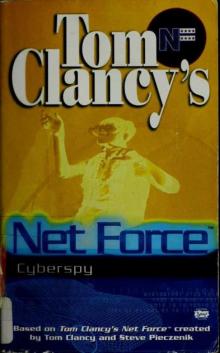 Cyberspy
Cyberspy Point of Contact
Point of Contact Operation Barracuda (2005)
Operation Barracuda (2005) Choke Point
Choke Point Power and Empire
Power and Empire Every Man a Tiger: The Gulf War Air Campaign
Every Man a Tiger: The Gulf War Air Campaign Endgame (1998)
Endgame (1998) EndWar: The Missing
EndWar: The Missing Splinter Cell (2004)
Splinter Cell (2004) The Great Race
The Great Race True Faith and Allegiance
True Faith and Allegiance Deathworld
Deathworld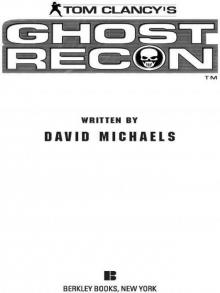 Ghost Recon (2008)
Ghost Recon (2008) Duel Identity
Duel Identity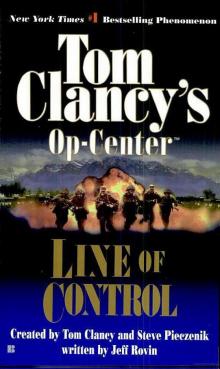 Line of Control o-8
Line of Control o-8 The Hunt for Red October jr-3
The Hunt for Red October jr-3 Hidden Agendas nf-2
Hidden Agendas nf-2 Acts of War oc-4
Acts of War oc-4 Ruthless.Com pp-2
Ruthless.Com pp-2 Night Moves
Night Moves The Hounds of Rome - Mystery of a Fugitive Priest
The Hounds of Rome - Mystery of a Fugitive Priest Into the Storm: On the Ground in Iraq sic-1
Into the Storm: On the Ground in Iraq sic-1 Threat Vector jrj-4
Threat Vector jrj-4 Combat Ops gr-2
Combat Ops gr-2 Virtual Vandals nfe-1
Virtual Vandals nfe-1 Runaways nfe-16
Runaways nfe-16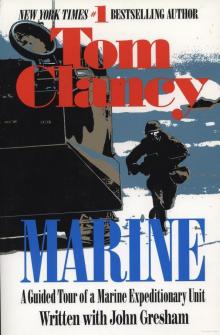 Marine: A Guided Tour of a Marine Expeditionary Unit tcml-4
Marine: A Guided Tour of a Marine Expeditionary Unit tcml-4 Shadow Warriors: Inside the Special Forces sic-3
Shadow Warriors: Inside the Special Forces sic-3 Jack Ryan Books 1-6
Jack Ryan Books 1-6 Cold Case nfe-15
Cold Case nfe-15 Changing of the Guard nf-8
Changing of the Guard nf-8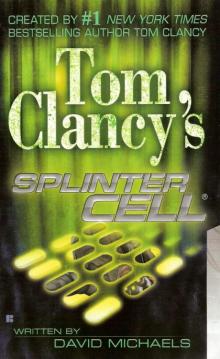 Splinter Cell sc-1
Splinter Cell sc-1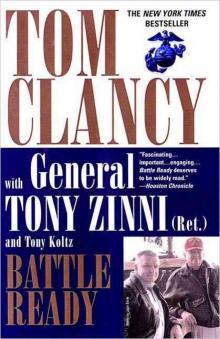 Battle Ready sic-4
Battle Ready sic-4 The Bear and the Dragon jrao-11
The Bear and the Dragon jrao-11 Fighter Wing: A Guided Tour of an Air Force Combat Wing tcml-3
Fighter Wing: A Guided Tour of an Air Force Combat Wing tcml-3 Patriot Games jr-1
Patriot Games jr-1 Jack Ryan Books 7-12
Jack Ryan Books 7-12 Mission of Honor o-9
Mission of Honor o-9 Private Lives nfe-9
Private Lives nfe-9 Operation Barracuda sc-2
Operation Barracuda sc-2 Cold War pp-5
Cold War pp-5 Point of Impact nf-5
Point of Impact nf-5 Red Rabbit jr-9
Red Rabbit jr-9 The Deadliest Game nfe-2
The Deadliest Game nfe-2 Springboard nf-9
Springboard nf-9 Safe House nfe-10
Safe House nfe-10 EndWar e-1
EndWar e-1 Duel Identity nfe-12
Duel Identity nfe-12 Deathworld nfe-13
Deathworld nfe-13 Politika pp-1
Politika pp-1 Rainbow Six jr-9
Rainbow Six jr-9 Tom Clancy's Power Plays 1 - 4
Tom Clancy's Power Plays 1 - 4 Endgame sc-6
Endgame sc-6 Executive Orders jr-7
Executive Orders jr-7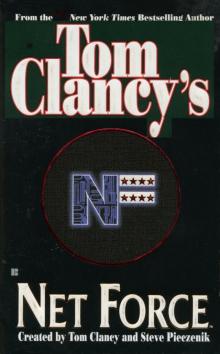 Net Force nf-1
Net Force nf-1 Call to Treason o-11
Call to Treason o-11 Locked On jrj-3
Locked On jrj-3 Against All Enemies
Against All Enemies The Sum of All Fears jr-7
The Sum of All Fears jr-7 Sea of Fire o-10
Sea of Fire o-10 Fallout sc-4
Fallout sc-4 Balance of Power o-5
Balance of Power o-5 Shadow Watch pp-3
Shadow Watch pp-3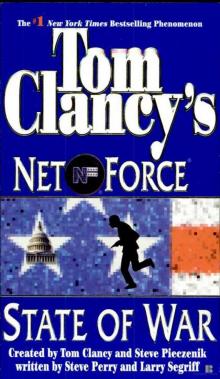 State of War nf-7
State of War nf-7 Wild Card pp-8
Wild Card pp-8 Games of State o-3
Games of State o-3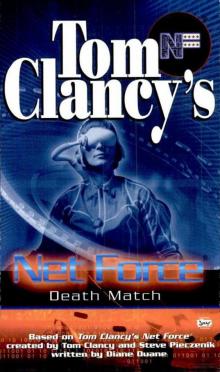 Death Match nfe-18
Death Match nfe-18 Against All Enemies mm-1
Against All Enemies mm-1 Every Man a Tiger: The Gulf War Air Campaign sic-2
Every Man a Tiger: The Gulf War Air Campaign sic-2 Cybernation nf-6
Cybernation nf-6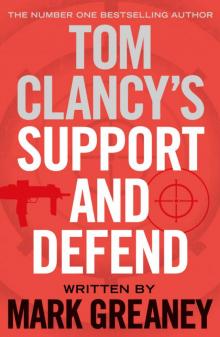 Support and Defend
Support and Defend Night Moves nf-3
Night Moves nf-3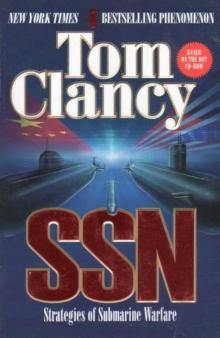 SSN
SSN Cutting Edge pp-6
Cutting Edge pp-6 The Cardinal of the Kremlin jrao-5
The Cardinal of the Kremlin jrao-5 War of Eagles o-12
War of Eagles o-12 Op-Center o-1
Op-Center o-1 Mirror Image o-2
Mirror Image o-2 The Archimedes Effect nf-10
The Archimedes Effect nf-10 Teeth of the Tiger jrj-1
Teeth of the Tiger jrj-1 Bio-Strike pp-4
Bio-Strike pp-4 State of Siege o-6
State of Siege o-6 Debt of Honor jr-6
Debt of Honor jr-6 Zero Hour pp-7
Zero Hour pp-7 Ghost Recon gr-1
Ghost Recon gr-1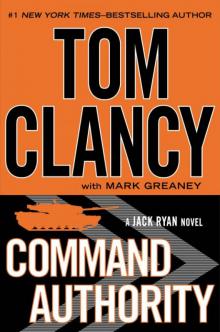 Command Authority jr-10
Command Authority jr-10 Tom Clancy's Power Plays 5 - 8
Tom Clancy's Power Plays 5 - 8 Checkmate sc-3
Checkmate sc-3 Breaking Point nf-4
Breaking Point nf-4 Gameprey nfe-11
Gameprey nfe-11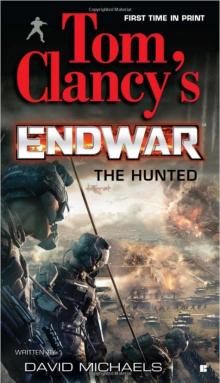 The Hunted e-2
The Hunted e-2 Hidden Agendas
Hidden Agendas Divide and Conquer o-7
Divide and Conquer o-7